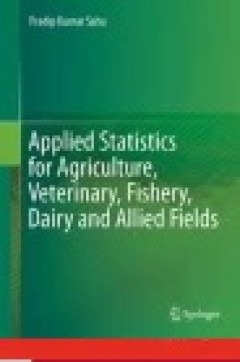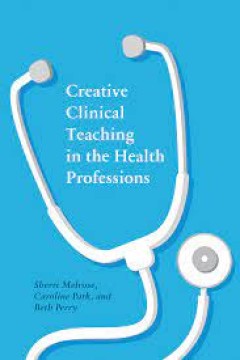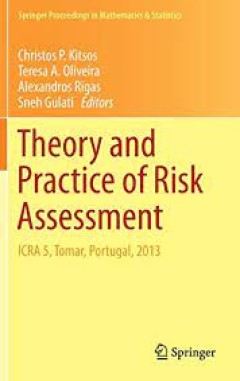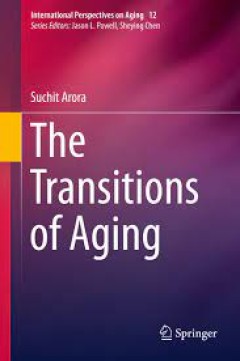Filter by

Applied Statistics for Agriculture, Veterinary, Fishery, Dairy and Allied Fields
This book is aimed at a wide range of readers who lack confidence in the mathematical and statistical sciences, particularly in the fields of Agriculture, Veterinary, Fishery, Dairy and other related areas. Its goal is to present the subject of statistics and its useful tools in various disciplines in such a manner that, after reading the book, readers will be equipped to apply the statistical …
- Edition
- Ed. 1
- ISBN/ISSN
- 978-81-322-2831-8
- Collation
- XVI, 533
- Series Title
- -
- Call Number
- 610.212 SAH a

Creative Clinical Teaching in the Health Professions
Creative Clinical Teaching in the Health Professions is an indispensable guide for educators in the health professions. Interspersed with creative strategies and notes from the field by clinical teachers who offer practical suggestions, this volume equips healthcare educators with sound pedagogical theory. The authors focus on the importance of personal philosophies, resilience, and professiona…
- Edition
- 1
- ISBN/ISSN
- 9781771993319.01
- Collation
- -
- Series Title
- -
- Call Number
- 6 x 9, 218 pages

Creative Clinical Teaching in the Health Professions
Creative Clinical Teaching in the Health Professions is an indispensable guide for educators in the health professions. Interspersed with creative strategies and notes from the field by clinical teachers who offer practical suggestions, this volume equips healthcare educators with sound pedagogical theory. The authors focus on the importance of personal philosophies, resilience, and professiona…
- Edition
- -
- ISBN/ISSN
- 9781771993319.01
- Collation
- -
- Series Title
- -
- Call Number
- 6 x 9, 218

Food Safety = Behavior: 30 Proven Techniques to Enhance Employee Compliance
This book helps in Achieving food safety success which requires going beyond traditional training, testing, and inspectional approaches to managing risks. It requires a better understanding of the human dimensions of food safety. In the field of food safety today, much is documented about specific microbes, time/temperature processes, post-process contamination, and HACCP–things often called …
- Edition
- -
- ISBN/ISSN
- 978-1-4939-2489-9
- Collation
- XIII, 115 hlm.
- Series Title
- Food Microbiology and Food Safety
- Call Number
- -

Theory and Practice of Risk Assessment ICRA 5, Tomar, Portugal, 2013
This book covers the latest results in the field of risk analysis. Presented topics include probabilistic models in cancer research, models and methods in longevity, epidemiology of cancer risk, engineering reliability and economical risk problems. The contributions of this volume originate from the 5th International Conference on Risk Analysis (ICRA 5). The conference brought together research…
- Edition
- -
- ISBN/ISSN
- 978-3-319-18029-8
- Collation
- -
- Series Title
- -
- Call Number
- -

Food Democracy: From Consumer to Food Citizen
This book explores the links between food and democracy. It addresses how democratic principles can be used to shape our food system and takes a practical ‘how-to’ approach to using democratic processes to regain control of the food we eat. It also highlights what food democracy looks like on the ground and how individuals, communities and societies can be empowered to access, cook and eat …
- Edition
- -
- ISBN/ISSN
- 978-981-287-423-8
- Collation
- XII, 57 hlm.
- Series Title
- -
- Call Number
- -

Theoretical and Empirical Insights into Child and Family Poverty Cross Natio…
This book brings together a range of theoretical and empirical perspectives on conceptualization, measurement, multidimensional impacts and policy and service responses to address child and family poverty. It illuminates issues and trends through country level chapters, thus shedding light on dynamics of poverty in different jurisdictions. The book is structured into three sections: The first i…
- Edition
- -
- ISBN/ISSN
- 978-3-319-17506-5
- Collation
- -
- Series Title
- -
- Call Number
- -

The Transitions of Aging
This book explores the unresolved paradox at the heart of population aging, namely how to account for the fact that death rates from most non-communicable diseases rise as people age, yet aggregate death rates from such diseases have decreased overall despite an increasingly aging population. It provides a long-term historical perspective on this issue, presenting evidence that the underpinning…
- Edition
- -
- ISBN/ISSN
- 978-3-319-14403-0
- Collation
- -
- Series Title
- -
- Call Number
- -

The SAGES / ERAS® Society Manual of Enhanced Recovery Programs for Gastroint…
This volume presents a comprehensive, up to date and practical approach to creating an ERAS program for GI surgery. The first sections review the evidence underlying individual elements of ERAS, including evidence from laparoscopic procedures when available or pointing to evidence gaps where more research is required. These are written by experts in the field, including surgeons, anesthesiologi…
- Edition
- -
- ISBN/ISSN
- 978-3-319-20364-5
- Collation
- -
- Series Title
- -
- Call Number
- -

Application of Systems Thinking to Health Policy & Public Health Ethics: Publ…
This book looks at health policy through the lens of public versus private: population health versus the somatic, social, or emotional experiences of a patient. Rather than presenting policy/ethics as overly technical, this book takes a novel approach of framing public and private health in terms of political philosophy, ethics, and popular examples. Each chapter ties back to the general ethics…
- Edition
- Ed. 1
- ISBN/ISSN
- 978-3-319-12203-8
- Collation
- XI, 100
- Series Title
- SpringerBriefs in Public Health
- Call Number
- 614 BAT a
 Computer Science, Information & General Works
Computer Science, Information & General Works  Philosophy & Psychology
Philosophy & Psychology  Religion
Religion  Social Sciences
Social Sciences  Language
Language  Pure Science
Pure Science  Applied Sciences
Applied Sciences  Art & Recreation
Art & Recreation  Literature
Literature  History & Geography
History & Geography